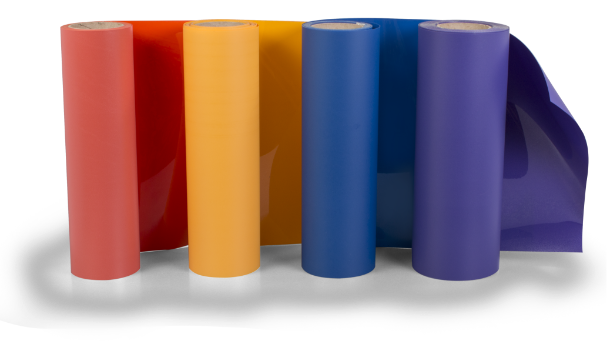
How to choose the right heat press for your business? Ben Robinson gives you important features to consider.
Did you know the right heat press can save you employees? This is true whether you have one heat press or twenty. Ease of use is a huge factor when it comes to heat printing. Unfortunately, some people only realize this after they have used a press that is difficult to open and close, or difficult to load shirts. We have some customers who heat print so much, they count the seconds that go into the production of each shirt.
If you are heat printing thousands of shirts a day, those seconds add up and can add costs.
How to Choose the Best Heat Transfer Press for your Business
By Ben Robinson, Stahls’ Hotronix
Picking the right heat press for your shop might seem simple enough at first glance, but there are actually quite a few variables — all of which can affect your profitability. Simply put, the right press can translate into greater reliability and less downtime, which means more productivity and more money. A better press also means more reliable temperature, time, and pressure, all of which make it far less likely that you’ll waste money on ruined garments.
Also, the right press can mean happier employees. A low-quality press is physically harder to operate and will wear out employees faster, whereas a higher-quality one is less demanding. For instance, cheap presses may have short handles, which doesn’t give the operator the leverage he needs, causing him to tire more quickly.
Further, a cheap, small press limits your decorating options because you can only imprint items that fit on the platen. And longevity may also be an issue with a lower-end unit. If a supplier cuts a few corners with cheaper bearings or metal, for instance, the press will have a shorter lifespan.
And a good press also should mean a good supplier — one that has good technical service and support. These machines don’t last forever, and in the event of a breakdown, you want a supplier who backs up his product.
Clearly, then, it’s key to choose the right unit. Here’s a rundown of some key shopping considerations.
Pressing Options
Heat presses come in manual and semi-automatic models. A manual press requires the operator to use physical force to close the press and open it when the timer goes off. A semi-automatic is typically easier to close and opens on its own once the time is up. It is much less tiring for the operator to use than a manual. For a shop that uses a press only occasionally, a manual is sufficient.
Ideal for higher-production environments, semi-automatic units cause significantly less fatigue than manual presses because they’re air operated or incorporate electronic magnetic technology. Push a few buttons, and the unit does the rest. Automatic controls mean the press is more accurate in temperature time and pressure, and it’s excellent for layout work.
Most air-driven presses have emergency stop buttons so that the operator’s hand doesn’t get pressed underneath a platen. (Manual presses don’t require such a button, as you would expect the operator to have enough sense to not lower the platen on his own hand.)
A semi-automatic unit’s pressure readout is calibrated in psi (pounds per square inch), so the operator simply turns a knob to the setting required. On the downside, it often weighs in at around 170 pounds, so it’s not very portable. Some models require an air compressor. Only about one-third of heat presses sold are semi-automatic, partially due to their higher price.
Once you’ve decided on manual or automatic, you can choose from the following types of heat presses:
Clam shell press (low to medium price range). This is a popular option because it takes the least amount of space. It’s also lighter in weight than other types making it more portable. A consideration is that the operator’s hands must go under the heated platen to load the shirt and then position the transfer, letters, or numbers. So there is more exposure to the heated platen than on other types.
Swing away press (moderate price range). The name “swing away” refers to the fact that the heated platen is moved to the side of the press before and after pressing. So the operator is not exposed to the heated platen when loading and positioning heat-applied materials. It’s also available with more advanced controls. It’s the most popular type of press for doing team uniforms; however, it requires twice as much space as a clam shell press because you need room to swing the top to one side.
Also, it’s a two-step operation: you have to unlock and lift the top, and swing it away, whereas a clam just opens straight up. Further, a swinger provides less pressure than a clam-style press, so it’s not recommended for heavy applications such as puff transfers. It’s also heavier than a clam shell style.
Draw press (moderate price range). This unique press, which provides a heat-free work space, has a stationary platen and fits easily into a corner, unlike a swing away. However, it requires more aisle space, as the drawer comes out, much like the drawer on a cash register. The draw press has a digital pressure readout and is popular in retail and the team uniform market.
Cap press. Another ideal way to create add-on sales, these presses usually come with interchangeable platens and a hold-down device, allowing them to accommodate most cap styles. Plus, it’s much faster to apply transfers to caps than it is to embroider them. A quality press comes with attachments to handle everything from six-panel caps to low-crown caps, as well as auto release.
Multipurpose press (moderate price range). This unit comes with a variety of attachments so that it can handle many types of substrates, making it a good choice for decorators who aren’t sure yet which market they’ll focus on. Specifically, it can do thicker items such as notepads, plates, etc.
One consideration is that every time you change out the platen, you have to wait for the new one to heat up. So it’s not practical for low-volume orders where you must change the platen out often. Most shops will buy a heat press dedicated to shirts and add a multipurpose press for specialty items. It will greatly increase the number of items to which you can apply decoration.
Key Features
Presses range anywhere from about $300 for an entry-level, light-duty press to $4,000 for a high-end, semi-automatic unit. As you pay more, you’ll get more accurate controls, leading to better products for your customers. Another high-end feature: non-stick coating. With this feature, employees can literally wipe off the press while it’s still warm. When you’ve put a transfer on upside down, this is handy to have. You’ll also get a better warranty with a higher-end unit.
Other features to look for:
Automatic open. This helpful feature uses electronic magnetic technology to open the press automatically when an item is done. This allows you to walk away from the unit and do other things — such as loading a second unit . Instead of standing by idly, you can prep more shirts. It does not require an air compressor.
Digital pressure readout. This feature is one that you definitely should look for in a heat press, as it ensures accurate, consistent pressure item after item.
Interchangeable platens. By changing out platens, you can use the same heat press to easily do a wide variety of items besides T-shirts — everything from tote bags to youth garments and sleeves. Many suppliers offer around six or so standard platens, while some will custom build a platen to your needs.
Key Questions
When shopping for a heat press, ask yourself the following:
- How much space do I have?
- What’s my budget?
- Why type of items and how many will I produce?
- What is my market, and will it expand into others?


